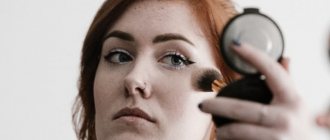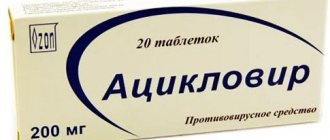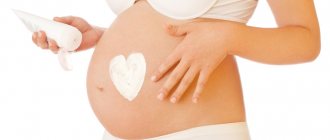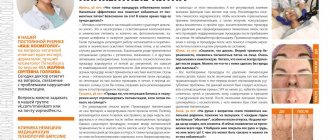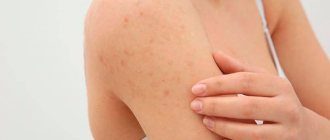Dermatoses most often appear on exposed areas of the skin as they are most susceptible to external factors.[1] This also applies to the skin of your hands. Symptoms such as itching, redness, peeling, various spots and other elements of the rash primarily affect the forearms, hands and fingers.
One of the mechanisms for the development of dermatitis on the fingers or hands is direct contact with a substance to which the body's immune system is not able to adequately respond. Skin allergy is a classic delayed hypersensitivity reaction in response to a single or systematic interaction with a pathogen.
Dermatological skin diseases are widespread, especially among working age adults.[2] For some patients, hand allergies can be a short-term problem: very often the symptoms go away on their own. Other patients struggle for a very long time with the disease and complications that can be caused by a secondary infection. In this case, hand allergies manifest themselves even more aggressively, the rashes become more widespread and unbearably itchy.
Types of hand allergies
Hand allergies mean a group of skin diseases, 20% of which are allergic dermatoses.[4] This type of skin pathology manifests itself at different ages, affects mainly older people, but can also begin in childhood as a sign of predisposition to dermatitis. Manifestations of allergies on the hands are typical for:
- atopic dermatitis (neurodermatitis);
- hives;
- contact dermatitis;
- eczema.
Each disease looks different. They also differ in duration of course, tendency to exacerbations and relapses. As a rule, the skin manifestations of atopic dermatitis and eczema persist for quite a long time, while urticaria and contact dermatitis are acute.[4] If you do not get rid of the external factors that triggered the allergy, the diseases will recur and eventually become chronic.
Eczema51
Eczema is a chronic allergic skin disease, which is characterized by the appearance of a polymorphic rash, acute inflammation, and itching.
The acute stage of the disease is characterized by the appearance of edema, erythema, against which vesicles, serous crusts, and punctate erosions with weeping are formed; papules and pustules with sterile contents are less often formed. If the pimples on the hands itch, this may indicate dyshidrotic and pruriginous eczema. So, with dyshidrotic eczema, the skin of the palms may become covered with itchy blisters and velculi. Pruriginous eczema is characterized by the appearance of small papulovesicles, mainly formed on the face and elbows, which can also cause itching.
Eczema develops due to neuroendocrine disorders, genetic predisposition, vegetative-vascular, metabolic, infectious and allergic factors.
Rashes on the hands: the most common diseases
In order to choose the right treatment, it is important to distinguish one type of allergic dermatosis from another. Therefore, let’s look at the symptoms of skin diseases in more detail:
- With atopic dermatitis (neurodermatitis), a rash often appears on the skin of the fingers and hands. The acute period of the disease is characterized by severe itching, redness and swelling of the skin. Itchy spots can come in different shapes and sizes. Without proper treatment, crusts may form at the site of the rash. In the chronic form, symptoms such as dry skin and flaking are observed.[3]
- Urticaria is divided into several types: immunological, physical, drug and idiopathic. The development of the first two is based on the body’s reaction to external stimuli, including food and household allergens, as well as high or low temperatures, sunlight and other factors. Taking certain medications can trigger drug-induced urticaria. Idiopathic is a rash whose cause cannot be determined.[4] All types of hives present more or less the same way: redness, swelling of the skin and the appearance of itchy blisters.
- Contact dermatitis often affects the skin on the fingers, especially when coming into contact with harmful substances such as rubber and metal products, household chemicals, cosmetics and perfumes, topical medications, certain plants and insects.[5] The disease can occur in both acute and chronic forms. The acute course is characterized by redness of the skin and the appearance of itchy blisters. The chronic form is accompanied by dryness and flaking of the skin, increased skin pattern.
- Eczema is an acute and chronic inflammatory disease that affects both the upper and lower extremities. It may also affect various parts of the body. As a rule, eczema rashes are symmetrical, accompanied by redness and limited swelling of the skin. Small blisters filled with clear liquid often appear on affected surfaces.[6]
What is onychodystrophy
A human nail has a root, a body, i.e. the visible part of the nail, a free edge and a matrix in which the basal cells multiply. They form and move towards the root of the nail, gradually flattening and becoming keratinized. This ensures continuous growth of the nail plate. Between the keratinized cells of the nail and its root is the so-called lunula. It is crescent-shaped and white in color, with a cuticle running along its flat edge. It is a sheath at the base of the nail plate that protects the nail root from damage by pathogenic microorganisms. The nail is limited on 3 sides by folds of skin called ridges. On the side of the free edge there is a thin layer of skin called hyponychium. Over the entire area, except for the free edge, the nail plate is adjacent to the nail bed. It is formed by connective tissue, which is rich in nerve endings and blood vessels.
When disturbances occur in nutrition, metabolism, or changes in the chemical composition of nails under the influence of certain factors, onychodystrophy develops. Moreover, its appearance directly depends not only on the nature of the influencing factors, but also on the characteristics of the chemical composition of the nails, since it can vary quite widely among different people.
As a result of the accumulation of metabolic products in the cells and intercellular space, the structure of the cells of the nail plates may change. This leads to onychodystrophy, which can be manifested by impaired nail growth, its detachment from the bed, brittleness, delamination, the formation of spots, cracks, stripes, etc.
Onychodystrophy is a disease that does not have age, seasonal, racial or other characteristics. It can act as a symptom of the development of other somatic disorders or an independent pathological process. But in any case, onychodystrophy should not be ignored, and its appearance should be considered as the first sign of the occurrence of other disorders in the body until the contrary is proven.
Onychodystrophy can affect both fingernails and toenails. In this case, not all nails may suffer at once, but only one or several.
The importance of timely diagnosis and treatment of the disease is also due to the fact that it can lead to the development of complications. The most dangerous consequences of the lack of treatment for onychodystrophy of any kind are:
- Onychomycosis is a fungal infection of the nail plate, very common in advanced onychodystrophies. As a result of the addition of a fungal infection, the nails become even more deformed and change color, and subsequently the pathogenic microflora through the bloodstream can spread throughout the body and lead to mycoses of internal organs, the development of severe allergies to a number of medications and other complications.
- Subungual melanoma is a serious oncological disease characterized by an aggressive course and capable of claiming lives. It is characterized by the formation of a dark spot of any shape, stripe, etc. under the nail. The disease requires immediate consultation with a doctor.
Causes of allergic reactions on hands
The main triggering factor for the development of allergic dermatoses is single or regular contact with the pathogen. In this case, treatment is aimed at completely eliminating the allergen to which the body is hypersensitive. It is quite difficult to determine, but among the most common causes of hypersensitivity are antigens from plants, animals, fungi, insects, foods, chemical compounds and drugs.
Also, allergic reactions on the fingers and other parts of the upper extremities occur due to:
- Gastrointestinal diseases. Diseases such as biliary dyskinesia, chronic gastritis and pancreatic dysfunction can trigger the development of allergic dermatitis and contribute to its transition to a chronic form.[3]
- Violation of the barrier function of the skin under the influence of mechanical, chemical and infectious agents. A broken epidermal barrier facilitates the penetration of allergens through the skin, the development of infection, and causes mild skin irritation.[7]
- Unfavorable environmental conditions. High levels of environmental pollution lead to an increased susceptibility of the population to allergic dermatoses.[8]
- Genetically determined factors. If both parents are prone to allergic diseases, the likelihood of developing neurodermatitis and other allergic dermatoses in the child is 70%.[9]
Acne31
Acne is a chronic inflammatory disease of the sebaceous glands, which manifests itself in the formation of closed and open comedones, inflammatory elements - pustules, papules, nodules. Most often, acne appears in the so-called seborrheic zones, where the density of the sebaceous glands is approximately 400 - 900 per cm2. This is the face (forehead, chin, nose), scalp, back. Acne also appears in the décolleté area and upper arms.
There are several degrees of acne severity. There is no clear classification, but in Russian practice the division into mild, moderate, and severe degrees of acne is often used.
Clinically, acne manifests itself in the form of closed (black dots) and open (small white rash) comedones, papules (red inflamed pimples), pustules (papules with purulent contents). With severe acne, nodules and cysts may appear.
Features of treatment
Treatment of skin diseases of an allergic nature requires an integrated approach. First of all, therapy should be aimed at the absolute exclusion of harmful pathogens, as well as at improving symptoms. Itching, swelling and redness cause patients severe discomfort, both physiological and emotional. Itchy spots make it difficult to sleep and work fully. In addition, the affected areas disrupt the aesthetics of the skin, so patients often hide them under clothing, which can only aggravate the situation. In addition, allergic reactions on the skin cannot be wetted, so patients are deprived of the opportunity to take a bath, visit the pool or sauna.
To eliminate a rash on the hands, it is necessary to use topical external agents in the form of ointments or creams. In the treatment of allergic dermatoses, drugs based on topical glucocorticosteroids have proven themselves to be effective.[10] Such products have wide application possibilities, since they have several effects on the inflammatory focus:
- anti-inflammatory effect;
- antiallergic effect;
- vasoconstrictor properties;
- antipruritic effect.
One of the representatives of local glucocorticosteroids prescribed for the treatment of allergic dermatoses are the drugs "Akriderm GK".
There is a black dot under the skin. Home Remedies
At home, you can use sea or table salt.
You need to prepare a solution: take a couple of tablespoons of salt, stir them in a glass of hot water, then put the mixture on the fire and bring to a boil. After this, you need to moisten a cotton pad or a piece of bandage and apply it to the affected areas of the skin, waiting until the cotton wool/bandage has completely cooled and dried. There is no need to wash your face after the procedure. You can repeat up to 4 times a day. Aspirin can help fight rashes. You need to take one tablet and crush it very carefully. Then add a couple of drops of clean water. Gently rub the thick mixture into the pimples, being careful not to affect healthy areas of the skin. Wait a few seconds, then rinse thoroughly.
Lemon juice helps achieve a certain result. It must be diluted in clean water in a 1:1 ratio. The resulting solution should be used to wipe the rash areas. In addition, such a remedy can also be prophylactic, preventing the reappearance of subcutaneous pimples.
Some essential oils help relieve pain and inflammation, reduce the number and size of subcutaneous rashes. Tea tree oil is considered the most effective. However, it is important to remember that essential oils should be applied diluted to the skin. In addition, this product is not suitable for use by people who have additional injuries to the skin, are prone to allergies, or have overly sensitive skin.
In my youth, I believed that the appearance of acne, the so-called blackheads, was the privilege of teenagers with problem skin in adolescence. However, not so long ago I realized that in fact, acne (which is nothing more than pores clogged with dirt) can be present even on very good, smooth, almost perfectly even skin. Most often, they appear in the T-zone, where the pores are widest, and the reasons for their occurrence are different, but the most basic of them is banal skin pollution. Dirt, soot from cars, hot summer smog in the city, heat, as well as too heavy nourishing cream - all this can lead to excess sebum and severe contamination of the pores along the entire length. When clogged skin stops breathing, metabolic processes in it are disrupted, and acne, inflammation and other minor troubles may soon appear. However, clogged pores are not the only cause of blackheads; they can be completely different (hormonal, infectious), and today we will talk to you about how to keep your skin clean and effectively fight acne.
Akriderm GK preparations for hand allergies
Depending on the form of the disease and the severity of the course, both ointment and Akriderm GK cream are used. They have a similar composition; the main difference is that the cream has a softer texture, so it is absorbed faster by the skin. It is more appropriate to use it for the treatment of acute and subacute conditions, as well as for weeping and thin areas of the skin. In turn, the ointment stays on the skin longer and has a high penetrating ability, therefore it is suitable for chronic inflammation accompanied by severe dryness and flaking.[10]
When Akriderm GK is applied to damaged skin, the preparations soften and cool the affected area, relieving itching and redness. The active substances not only improve symptoms, but also help eliminate pathogenic microorganisms. Thanks to the combined composition, which includes several active substances and auxiliary components, the treatment brings a noticeable and long-lasting effect.[11]
Diagnostics
If signs of onychodystrophy occur, you should contact a dermatologist who will interview and examine the patient, including using a dermatoscope. It is a compact device that provides a multiple magnification of the surface under consideration.
If necessary, the doctor will additionally prescribe a blood test, nail microscopy and bacterial culture. These tests are mainly required to diagnose infectious complications of onychodystrophy.
Brown
Why do brown spots appear on nails?
They talk about the following violations:
- problems with the kidneys;
- increased iron content in the blood;
- hormonal imbalance, Addison's disease or adrenal insufficiency;
- diabetes mellitus with complications in the form of trophic disorders;
- fungal infection caused by trichophyton red;
- long-term use of certain medications (zidovudine, gold preparations).
Various factors lead to spots on the nails of one color or another. It is impossible to competently understand this problem on your own. You need to consult a doctor, take additional tests, undergo examinations to understand why dark or light spots appear on your nails. For the health of nails and the whole body, it is important to eliminate the cause of the stains, and not to mask them with colored varnishes. And prevention requires proper care, proper nutrition and protection from harmful external influences.
0 0
What causes pigment spots to appear on the face after sunbathing?
Most manifestations of hyperpigmentation occur after the negative effects of ultraviolet rays. Among those that immediately appear are freckles, various melasma and chloasma. There are also those that have a cumulative effect, for example, lentigo.
Also, if during the summer vacation there were inflammatory processes in open areas of the body, most likely after they heal, a change in shade can be clearly observed.
Prolonged exposure to the hot sun with the presence of existing tumors and increased pigmentation can be fraught with the degeneration of harmless spots into aggressive cancer - melanoma. Therefore, you should limit your tanning time and use special cosmetics for protection.
Blue
Blue spots, like black spots, most often appear due to injury. Even minor injuries that were not immediately noticed or quickly forgotten about cause the plate to turn blue.
Other reasons why blue spots form on nails are associated with diseases of the heart, blood vessels, and lungs, when the blood is poorly saturated with oxygen or the circulation in the extremities is impaired.
Deficiency of iron and vitamin B12 provokes blue nails due to the development of iron deficiency anemia.
The most dangerous cause of blue spots is a glomus tumor of the nail phalanx, which looks like a dark blue bruise. This is a serious lesion that requires surgery.

